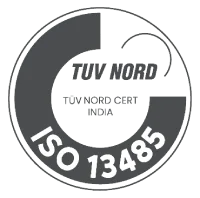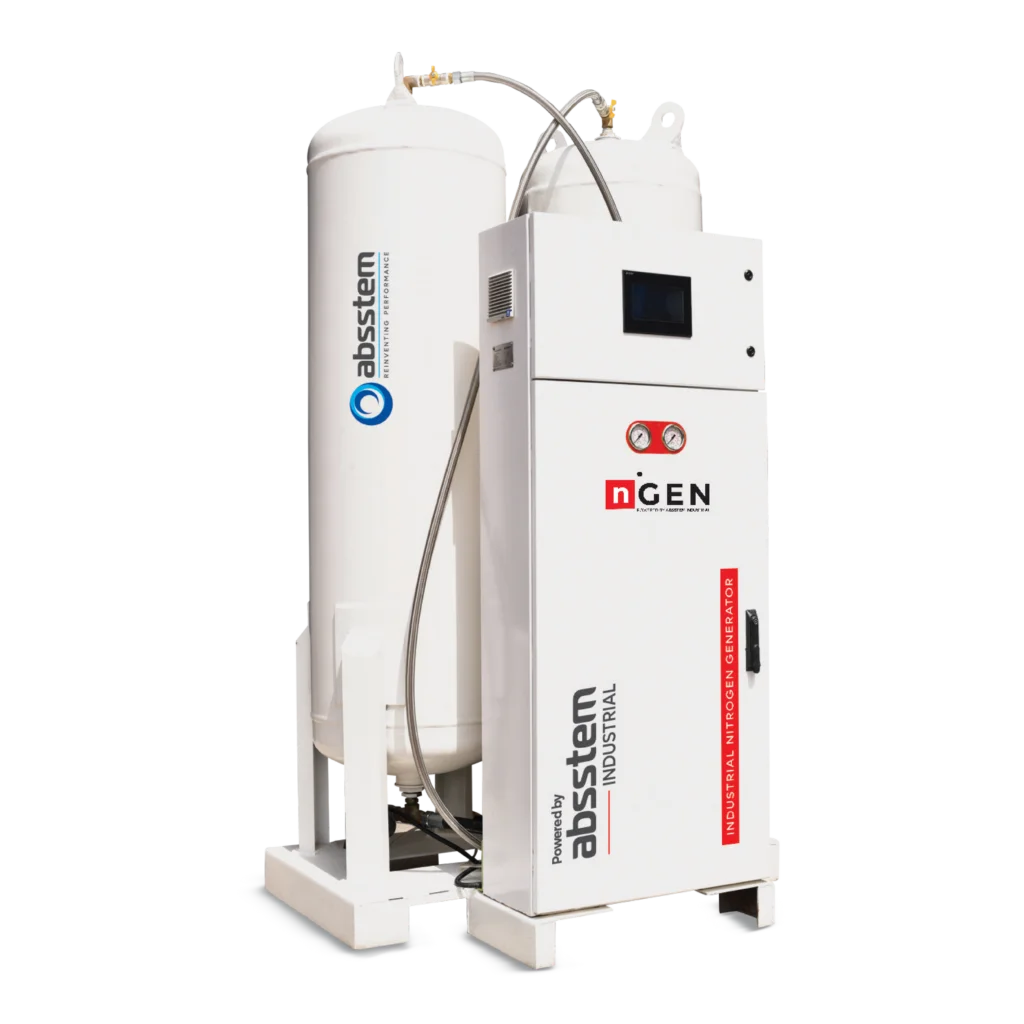Channel
Partner

Being the largest component of breathable air (78%), nitrogen gas serves a lot of purposes. Food packaging and chemical blanketing or nitrogen padding; has a unique requirement and that’s how we designed and manufactured the nGENX.
Gone are the days when high-pressure pre-filled cylinders were the only option to meet the nitrogen requirements of a manufacturing unit or any other industry with regular nitrogen consumption. With years of research and hard work, Absstem has come up with the efficient nGENX. It allows you to generate nitrogen onsite at required purity levels.

EIGA E-941 Compliant Nitrogen

In-house Placement And Production

Starts Production Minutes After Installation

Hydrocarbon Free Nitrogen

Compact And Easy To Maintain

Designed for 24x7 Operation

Regular PMS (Preventive Maintenance Schedule)

The industrial nitrogen generator consists of two adsorbers filled with carbon molecular sieves (CMS). Pressurized air is passed through one of these adsorbers with Carbon, having a structure to attract oxygen, adsorbs oxygen from the air and nitrogen is allowed to pass through to the storage tank and is produced as the final product. As the adsorber approaches saturation, the air is allowed to pass through the other adsorber while this adsorber is being regenerated to ensure a continuous supply of industrial nitrogen. This changeover takes place through a specially designed micro controller to ensure a hassle-free operation. The quality of nitrogen produced is continuously monitored by a nitrogen analyzer.
The integral components of NGEN include: -











With great emphasis on cost-effective, low-impact business practices, most businesses opt for bulk delivery to meet all their industrial gas requirements. But given the fluctuation in market prices of gases like oxygen and nitrogen, this is no more a viable option. A large number of industries are using onsite gas generation plants for reliability and improved ROI.

Depends on the purity requirement (95-99.9995%) and LPM consumption. Please contact us for an estimated cost.
Primarily, you need to understand the purity required for your specific application along with the volume required.
Very Reliable. These machines are built to last. Our generators have the lowest Production Downtimes the industry has to offer.
PSA stands for Pressure Swing Adsorption, and it is a technology used to separate gases based on the differences in their adsorption rates onto a solid material. Membrane nitrogen generators, on the other hand, use a semipermeable membrane to separate nitrogen from other gases. Both PSA and membrane nitrogen generators are used to produce high-purity nitrogen gas from air, but they use different principles and technologies to do so. PSA nitrogen generators work by passing air through a vessel filled with an adsorbent material, such as carbon. The nitrogen in the air is preferentially adsorbed onto the adsorbent material, while the other gases pass through. By cycling the pressure in the vessel and switching between two or more adsorbent beds, the PSA system is able to continuously produce high-purity nitrogen gas. Membrane nitrogen generators, on the other hand, use a membrane to selectively allow nitrogen molecules to pass through while rejecting other gases. The air is passed through the membrane under pressure, and the nitrogen is separated out as it diffuses through the membrane. Membrane nitrogen generators can also produce high-purity nitrogen, but they tend to have lower capacity and require a higher pressure drop across the membrane compared to PSA systems. One advantage of PSA nitrogen generators is that they tend to have higher capacity and can produce nitrogen with higher purity compared to membrane systems. They also tend to be more reliable and require less maintenance. Membrane nitrogen generators tend to be smaller and more compact, making them suitable for applications where space is limited. However, they have lower capacity and may not be able to produce nitrogen with as high of a purity as PSA systems. They also have a limited lifespan and may require more frequent maintenance. In general, PSA nitrogen generators are a good choice for applications that require high-purity nitrogen at a large scale, while membrane nitrogen generators may be more suitable for smaller, more specialized applications. Ultimately, the decision between PSA and membrane nitrogen generators should be based on a careful evaluation of the specific requirements of the application and a cost-benefit analysis.
With proper and consistent maintenance these machines can run for over 10 years.